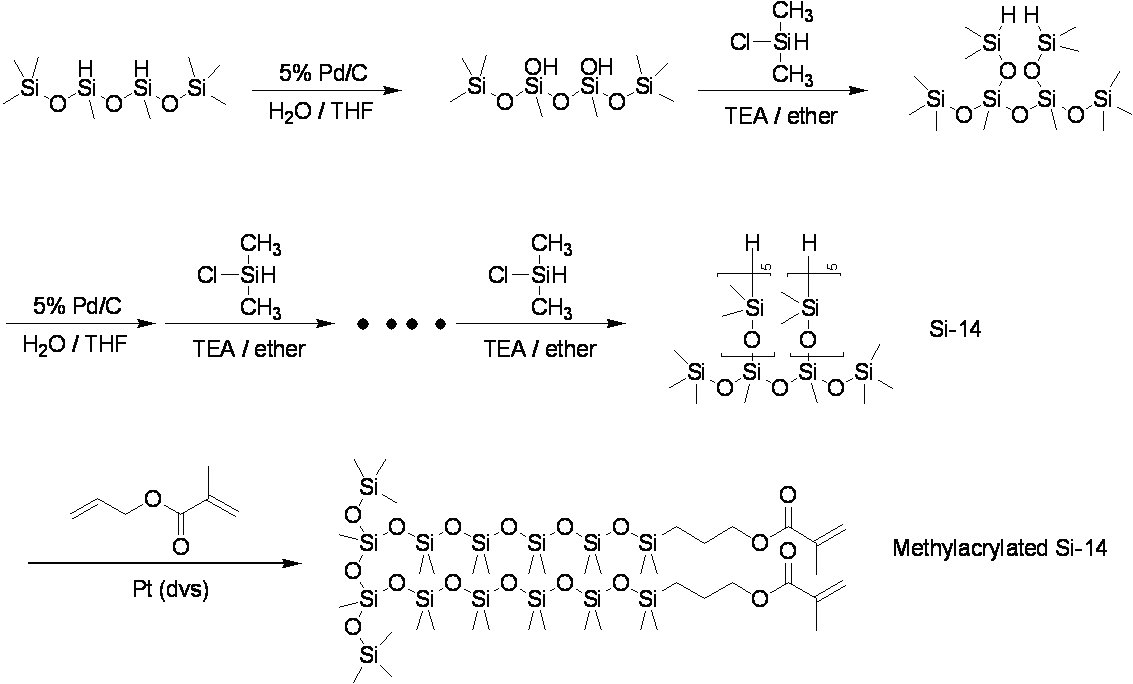Material Design
Using basic simulation, we were able to identify the material properties that are important for planarization. An ideal SFIL-R topcoat material should have low viscosity, minimal shrinkage, high silicon content for etch resistance, and the ability to be photo or thermally cured.
Figure 14. Design criteria for SFIL-R planarizing material.
Si-14 (UT-Austin)
Polydimethylsiloxane is one of several types of silicone oils known for their variable rheological behavior. These materials are used as heat transfer liquids and because of low vapor pressure they are often used in oil diffusion pumps. The design of Si-14 is based on low molecular weight, branched PDMS with photosensitive (methyl)acrylate functional groups. The high silicon content makes the polymer a good etch mask during pattern transfer, and the side branches decrease the viscosity, which is ideal for planarization.

Figure 15. Synthesis route for (methyl)acrylated Si-14.
The vapor pressure of Si-14 was determined by evacuating a chamber containing the material and allowing the pressure to equilibrate at varying temperatures. The vapor pressure is 0.75 Torr at 25°C, indicating low volatility. For comparison purposes, benzene, water, and motor oil (SAE 10W 30) have vapor pressure values of 100.80, 23.70, 0.88 Torr at 25°C, respectively. Post exposure shrinkage was determined by measuring film thickness values before and after UV exposure with a J.A. Woollam ellipsometer; Si-14 demonstrated a shrinkage value of 5.1%. The viscosity, measured by a Paar Physica MCR cone and plate viscometer, is 15.1 cP, and the surface tension, measured by a Ramé-Hart m100 goniometer, is 22.1 dyne/cm.
Continue reading >> Experiments